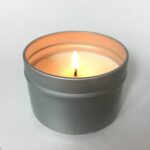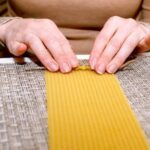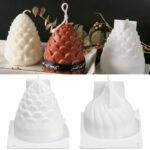Candle making is a creative and rewarding craft, but it is essential to ensure that the equipment used in the process is kept clean for optimal production and safety. In this article, we will discuss the best way to clean candle making equipment, from common cleaning methods to specialized cleaning solutions. Maintaining clean equipment not only prolongs its longevity but also contributes to producing high-quality candles.
Properly cleaned candle making equipment is crucial for ensuring that the candles produced are of the highest quality. Unclean equipment can lead to impurities in the wax and affect the appearance and fragrance of the finished product. Additionally, regular cleaning helps prevent potential hazards associated with residue buildup, ultimately contributing to a safer working environment.
In the following sections, we will explore the various types of equipment used in candle making, traditional cleaning methods, specialized cleaning solutions, step-by-step cleaning guides, tips for tough stains and residue, as well as maintenance and storage practices. It is imperative for candle makers to adopt the best cleaning practices outlined in this article to maintain their equipment’s performance and produce top-notch candles consistently.
Types of Candle Making Equipment
When it comes to candle making, having the right equipment is essential for producing high-quality and safe candles. There are various types of equipment required for the candle making process, each serving a unique purpose. Here are some of the most common types of candle making equipment:
1. Melters: These are used to melt wax and other ingredients used in candle making. They come in various sizes and designs, including double boilers and electric melters.
2. Molds: Candle molds come in different shapes and sizes, allowing for the creation of various candle designs. They can be made of metal, silicone, or plastic.
3. Mixing Tools: Stirring and mixing are crucial steps in the candle making process. Mixing tools such as spatulas, whisks, and stirring rods are essential for blending wax and fragrance oils evenly.
Cleaning these types of equipment is vital to ensure that they remain functional and free from any residue that could affect the quality of future candles. The best way to clean candle making equipment involves using effective methods tailored to the specific type of equipment being cleaned.
Whether it’s cleaning a melter after use or removing stubborn wax residue from molds, utilizing the appropriate cleaning techniques is crucial for maintaining the longevity of the equipment. In the next section, we will explore some common cleaning methods as well as specialized cleaning solutions designed specifically for candle making equipment.
By keeping your candle making equipment clean and well-maintained, you can ensure that your candles are produced with consistency and quality while also prolonging the lifespan of your equipment. Follow our step-by-step guide on how to effectively clean each type of equipment to ensure optimal performance and safety in your candle making endeavors. And don’t forget to check out our expert tips for dealing with tough stains and residue.
Common Cleaning Methods
Maintaining clean candle making equipment is essential for both optimal production and safety. Properly cleaned equipment ensures that the quality of candle products remains high, while also preventing potential hazards that could arise from residue buildup. In this section, we will explore some of the common cleaning methods used in the candle making industry.
Hot Soapy Water
A simple yet effective method for cleaning candle making equipment is using hot, soapy water. This method is particularly suitable for items such as molds, mixing tools, and work surfaces. By using a mild detergent and hot water, it is possible to remove wax residue and any other impurities from the equipment. This method should be followed by thorough rinsing with clean water to ensure no soap residue remains.
Scraping Off Wax Residue
For certain types of equipment such as melters and stirring utensils, scraping off wax residue may be necessary. After the wax has cooled and solidified, it can be carefully scraped off using a plastic scraper or spatula. It is important to handle this process with care to avoid damaging the equipment. Any remaining traces of wax can then be further removed using hot soapy water or specialized cleaning solutions.
Vinegar Solution
Another effective method for cleaning candle making equipment involves using a vinegar solution. Vinegar’s acidic properties make it a great natural cleaner for removing stubborn wax residue and stains. Simply dilute white vinegar with water and use the solution to wipe down surfaces and equipment. This method is especially useful for items like work tables or melter exteriors where wax buildup may occur.
By incorporating these common cleaning methods into regular maintenance routines, candle makers can ensure their equipment remains in optimal condition for producing high-quality candles consistently.
Specialized Cleaning Solutions
When it comes to keeping candle making equipment clean and in optimal working condition, it is essential to explore specialized cleaning solutions and products designed specifically for this purpose. While traditional cleaning methods like hot soapy water and scraping off wax residue can be effective, utilizing specialized cleaning solutions can offer a more efficient and thorough cleaning process.
One of the best ways to clean candle making equipment is by using specialized cleaning solutions that are formulated to break down and remove wax, oil, and other stubborn residues effectively. These solutions are often specifically designed for different types of candle making equipment, such as melters, molds, and mixing tools. By using these products, candle makers can ensure that their equipment is free from any build-up or contamination that could affect the quality of their candles.
In addition to using specialized cleaning solutions, it is important to follow manufacturer guidelines for each piece of equipment when using these products. This may include dilution ratios, proper application techniques, and safety precautions.
By following these guidelines, candle makers can effectively clean their equipment without causing any damage or compromising its functionality. Overall, incorporating specialized cleaning solutions into a regular maintenance routine is the best way to ensure that candle making equipment remains in top-notch condition for producing high-quality candles.
Step-by-Step Cleaning Guide
Candle making equipment requires regular cleaning to ensure the safety and quality of the candle production process. Residue from wax and fragrance oils can build up over time, leading to potential safety hazards and affecting the quality of the candles. In this step-by-step cleaning guide, we will outline the best way to clean candle making equipment to ensure optimal production and safety.
Gather Your Supplies
Before starting the cleaning process, gather all necessary supplies such as hot soapy water, specialized cleaning solutions, scrub brushes, and cleaning cloths. It’s essential to have everything on hand to streamline the cleaning process and tackle any tough stains or residue effectively.
Dismantle and Inspect Equipment
Begin by dismantling the candle making equipment, such as melters, molds, and mixing tools. Inspect each component for any buildup of wax or residue. Take note of any areas that may require extra attention during the cleaning process.
Clean With Hot Soapy Water or Specialized Solutions
Depending on the type and severity of residue buildup, clean the equipment using hot soapy water or specialized cleaning solutions. For routine cleaning, hot soapy water can effectively remove surface residue. However, for tougher buildup, specialized solutions designed specifically for candle making equipment may be necessary.
After thoroughly scrubbing and removing residue from all components of the equipment, rinse them with clean water to ensure no soap or cleaner residue remains.
By following this step-by-step guide for cleaning candle making equipment using a combination of traditional cleaning methods and specialized solutions when needed, you can maintain a safe production environment and ensure high-quality candle output. Regular maintenance is key to prolonging the life of your equipment and producing exceptional candles.
Tips for Tough Stains and Residue
Candle making equipment can accumulate tough stains and residue over time, which can be challenging to remove. Here are some expert tips and tricks for effectively tackling stubborn stains and residue:
1. Use specialized cleaning solutions: There are specific cleaning solutions designed for removing wax and other residues from candle making equipment. These solutions are formulated to dissolve stubborn buildup without damaging the equipment. Look for products specifically labeled for candle making equipment cleaning.
2. Utilize heat: Heat can be an effective tool for loosening tough stains and residue on candle making equipment. For example, gently heating the equipment with a hairdryer or heat gun can soften the wax residue, making it easier to scrape off.
3. Invest in a good scraper tool: A sturdy scraper or putty knife can be invaluable for removing hardened wax or other residues from candle making equipment. Be sure to use gentle pressure to avoid damaging the surfaces of the equipment.
4. Soak in hot water: For removable parts of candle making equipment, such as molds or mixing tools, soaking in hot soapy water can help loosen stubborn residues before scrubbing with a soft brush or sponge.
5. Consider using natural solvents: Natural solvents like vinegar or citrus-based cleaners can be effective at breaking down sticky residues on candle making equipment without leaving behind harsh chemical smells.
By incorporating these tips into your cleaning routine, you’ll be able to effectively tackle tough stains and residue on your candle making equipment, ensuring that it remains in top condition for producing high-quality candles.
Maintenance and Storage Tips
Proper maintenance and storage of candle making equipment are essential for ensuring the longevity and effectiveness of the tools used in the candle making process. One of the best ways to clean candle making equipment is to establish a regular cleaning routine and follow specific storage guidelines to prevent damage and contamination.
To maintain candle making equipment, it is important to clean each piece thoroughly after every use. This includes removing any wax residue, cleaning off any soot or debris, and wiping down all surfaces. Following a detailed step-by-step guide for cleaning candle making equipment will help ensure that no leftover residue or contaminants affect the quality of future batches of candles.
Once the equipment is clean, it is crucial to store it properly to avoid damage and contamination. This typically involves storing tools in a cool, dry place away from direct sunlight and extreme temperatures. Additionally, properly organizing and storing molds, melters, mixing tools, and other equipment separately can also help prevent damage or cross-contamination. Using protective coverings or cases for delicate equipment can also be beneficial in maintaining their condition over time.
Proper maintenance and storage of candle making equipment not only helps ensure that the tools remain in good condition but also contributes to producing high-quality candles consistently. By prioritizing regular cleaning and following specific storage practices, candle makers can prolong the lifespan of their equipment while maintaining optimal production standards.
| Maintenance Tips | Storage Tips |
|---|---|
| Establish a regular cleaning routine | Store in a cool, dry place away from direct sunlight |
| Follow a step-by-step guide for cleaning | Avoid extreme temperatures |
| Remove wax residue after every use | Organize and store equipment separately |
Importance of Regular Cleaning
Regular cleaning of candle making equipment is of utmost importance for maintaining optimal production and ensuring safety in the candle making process. Neglecting to clean equipment can result in cross-contamination of fragrances, colors, and waxes, leading to undesirable outcomes in the final candle product.
Moreover, it can also pose safety hazards due to the buildup of flammable residue and potential equipment malfunction. Therefore, implementing a regular cleaning routine is essential for both the quality of candles produced and the well-being of those involved in the candle making process.
Proper maintenance and storage practices are crucial for extending the life of candle making equipment. Regular cleaning not only removes wax buildup but also prevents corrosion and deterioration of equipment parts over time. Additionally, clean equipment is easier to work with, allowing for more efficient production processes. By incorporating regular cleaning into the overall maintenance routine, candle makers can ensure that their equipment remains in good condition for longer periods.
One of the best ways to clean candle making equipment is by using specialized cleaning solutions and products designed specifically for this purpose. These products are formulated to effectively remove wax residue and other contaminants without causing damage to the equipment. Additionally, they may have antimicrobial properties to maintain a clean environment during the candle making process.
| Equipment Type | Specialized Cleaning Solution |
|---|---|
| Melters | Citrus-based cleaner |
| Molds | Non-toxic mold cleaner |
| Mixing Tools | Alcohol-based cleaner |
Conclusion
In conclusion, maintaining clean candle making equipment is essential for ensuring optimal production and the safety of both the maker and the consumer. The various types of equipment involved in candle making, from melters to molds and mixing tools, require regular cleaning to prevent cross-contamination of scents and colors, as well as to remove wax residue that may affect the quality of future batches.
Additionally, keeping equipment clean helps to prolong its lifespan and ultimately saves money by avoiding costly replacements.
While traditional methods such as hot soapy water and scraping off wax residue can be effective to some extent, specialized cleaning solutions and products designed specifically for candle making equipment offer a more thorough and efficient option. These specialized solutions are formulated to break down stubborn wax buildup and remove lingering scents, ensuring that equipment is completely sanitized between uses.
Following a step-by-step guide for cleaning candle making equipment using these best methods contributes not only to cleanliness but also to the overall quality of the candles being produced.
In essence, adopting the best way to clean candle making equipment is crucial for the success of any candle making endeavor. In addition to providing a detailed step-by-step guide on how to effectively maintain cleanliness within different types of equipment, it’s important that one does not overlook proper maintenance and storage practices.
By regularly practicing these best cleaning practices for candle making equipment users can safeguard against potential issues down their next manufacturing assembly line production duty while further enhancing end-product color schemes.
Frequently Asked Questions
How Do You Clean Equipment After Candle Making?
After candle making, cleaning equipment is essential to maintain hygiene and prevent cross-contamination. I clean my equipment by scraping off excess wax, wiping with a paper towel, then washing with hot soapy water.
How Do You Clean a Candle Wax Machine?
Cleaning a candle wax machine involves carefully disassembling the machine, removing any leftover wax, and wiping down all components with a cloth dampened in hot soapy water. Thorough drying is crucial to prevent mold growth.
How Do You Clean Candle Cylinders?
To clean candle cylinders, I first remove any residual wax by scraping it off with a spatula or knife. Then I wash the cylinders with hot soapy water and use a scrub brush if necessary to remove any stubborn wax build-up. Finally, thorough drying is important before using them again.

Welcome to my candle making blog! In this blog, I will be sharing my tips and tricks for making candles. I will also be sharing some of my favorite recipes.





